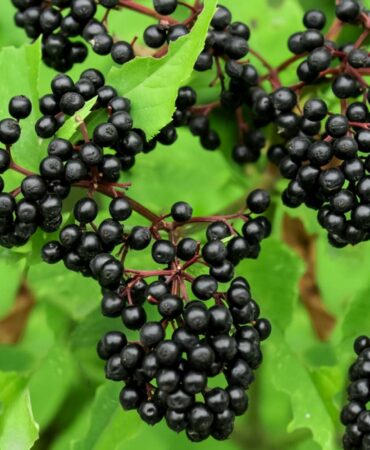Currently Empty: £0.00

Herb Histories: Rosemary – Who rules the roost?
Cutting through the bitter winds and drenching rain the last few days, have been the wonderful autumn colours and aromas. Rosemary, is one of those herbs I associate with autumn, in part due to its prickly appearance, mostly though, it’s due to cooking. This time of year calls for more pies and more roast potatoes with Rosemary sprinkled on top. In this next chapter of Herb Histories, Helen explores the uses and symbolism of this wonderful herb. Without further ado, let Herb Histories with Helen begin…
Written by Helen Miller
Along with Sage, Lavender and Thyme, Rosemary is one of the oldest aromatic herbs used for medicine, cosmetics and cooking.1 This striking, evergreen bush is grown around the world. Rosemary flowers can vary from white to a bluey-purple colour and the herb is unusual in that it often flowers twice a year, once in the spring (April-May) and then again in the autumn. It is well known for its benefits to memory, but what other properties does this well-regarded plant contain and could it say more about the internal dynamics in a house than you might expect?
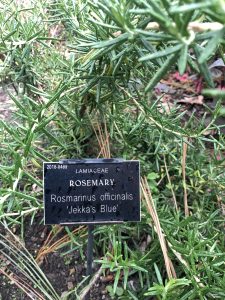
What’s In A Name?
The Old English Herbarium has a herb listed as ‘Bothen’ – it’s possible this refers to Rosemary since it goes on to say that the herb is called ‘rosmarim’, however, it could also have been Thyme as well as a few other herbs. ‘Bothen’ was cultivated for its tonic properties and fragrance; it was also used for flavouring beer since it appears that when the volatile oils were released from the plant into the beer, in large doses, they caused great rage, useful for warrior tribes when they went into battle.7
Ros maris, from which the name Rosemary is derived, means ‘dew of the sea’. This could come from the white-blue flowers that give the appearance of dew on the branches of the shrubs, which originally grew along the Western Mediterranean coast.1 The scientific name for Rosemary is also based on this idea.
Recently however, the scientific name has changed. It was Rosmarinus officinalis, meaning that Rosemary was in the genus Rosmarinus with two other species (R. eryocalix, and R. tomentosus). Recently, however, a phylogenetic study has found that Rosemary is more closely related to the Salvia genus than to the other species of Rosmarinus. The scientific name of Rosemary has therefore been changed to Salvia rosmarinus (it could not be renamed Salvia officinalis because that is the scientific name already given to Common or Garden Sage) and this is how it should now be referred to in scientific writing.
Remember Rosemary
Due to the use of Rosemary for improving memory it was used historically, as a symbol of fidelity for lovers, as well as being used at weddings, funerals and for decorating halls for banquets and other gatherings. Apparently, Anne of Cleves had it in her wreath on her marriage to Henry VIII and Rosemary branches decorated with silk threads were given to guests at weddings to represent love and loyalty.4
A reoccurring story for Rosemary, from rural counties around England, is that it would only grow well in houses where the mistress was the ‘master’ of the house, and effectively ruled the roost. In the Treasury of Botany it reports that some of the masters of the house may have secretly interfered with the growth of the Rosemary bushes on their properties to ensure that their lack of authority in their house was not seen publicly!5
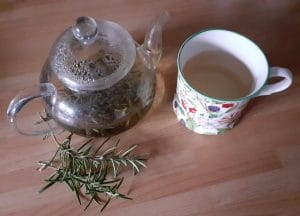
Traditional Uses of Rosemary
One of the longest and most traditional uses of Rosemary is to aid the memory. Gerard, in his Herball, says that the Arabians and other ancient physicians used it in this way. He also recommends making sugared Rosemary flowers to ‘…comfort the heart, and make it merry, quicken the spirits and make them more lively.’3
Culpeper states that Rosemary decocted in wine ‘…helps cold diseases of the head and brain’ and recommends drinking it and bathing the temples with it. Oil of Rosemary was also used for treating many diseases by bathing the temples in two or three drops or putting a couple of drops to the nostrils, but only a small amount was recommended for use at a time. Other uses for Rosemary included treating falling-sickness, palsy, stomach disorders and wind.2
The cosmetic uses for Rosemary mainly use the spiritous waters in hair-lotions. This is due to its pleasant smell and the ability for it to stimulate hair growth so preventing premature baldness. The dried leaves and flowers were combined with borax to make a rinse that reportedly made one of the best hair washes known (although this is not advised these days!). Rosemary was also used as an effective treatment for dandruff.4
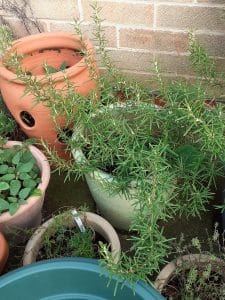
Modern Uses of Rosemary
A lot of research is being carried out into Rosemary including its anti-inflammatory, anti-cancer and antimicrobial effects. One of the compounds in Rosemary, called carnosic acid, has been shown to be a strong nitric oxide (NO) inhibitor (NO starts or exacerbates the inflammatory process) and this has led to research in the use of Rosemary to treat conditions such as atopic dermatitis.6
On a study into the use of a water-alcohol extract of Rosemary on human melanoma cells it was found that the Rosemary extract decreased the number, weight, diameter and occurrence of the tumours. Again carnosic acid was shown to have an important protective role against melanomas.6 Carnosol and rosmarinic acid have also been found to cause cell death in tumours.8
Rosemary essential oils have been found to be antibacterial and antifungal. It can prevent the growth of bacteria, such as Escherichia coli, and could potentially overcome the drug resistance of some types of bacteria by overcoming the impermeability of their cell membranes. It has been shown to prevent the development of fungal biofilms and can prevent fungi, such as Candida, adhering to surfaces by altering their membrane permeability and denaturing other cellular structures. The effectiveness of the essential oils depends on their chemical composition, which depends on where the plant was grown, climate and time of harvest. 8 From this research it seems that it may well be Rosemary that rules the roost!
Herb Histories is a new blog series that will be published every third Saturday of every month up until the end of the year. If you would like to be notified directly via email when the next chapter is available, please send ‘Herb Histories’ to blog@herbsociety.org.uk.
References
- Barker, J. (2001) The Medicinal Flora of Britain and Northwestern Europe, Winter Press
- Culpepper, N. (1653) Culpepper’s Complete Herbal: consisting of a comprehensive description of nearly all herbs with their medicinal properties and directions for compounding the medicines extracted from them, W. Foulsham & Co., Ltd., London.
- Gerard, J. (1633) The Herball: A General Historie of Plantes
- Grieves, M. (1998) A Modern Herbal, Tiger Books International, London.
- Lindley, J. (1870) The Treasury of Botany: a popular dictionary of the vegetable kingdom.
- Malvezzi de Macedo, L., Mendes dos Santos, E., Militao, L, Lacalendola Tundisi, L., Artem Ataide, J., Barbosa Souto, E. and Gava Mazzola, P. (2020) Rosemary (Rosmarinus officinalis, syn Salvia rosmarinus Spenn.) and its topical applications: A Review, Plants, 9:651-663.
- Pollington, S. (2011) Leechbook: Early English charms, plantlore and healing, Anglo-Saxon Books
- Rafie, H., Soheila, H. and Grant, E. (2017) Rosmarinus officinalis (Rosemary): A Novel Therapeutic Agent for Antioxidant, Antimicrobial, Anticancer, Antidiabetic, Antidepressant, Neuroprotective, Anti-inflammatory and Anti-obesity Treatment, Herbal Medicine, 3:2-8

